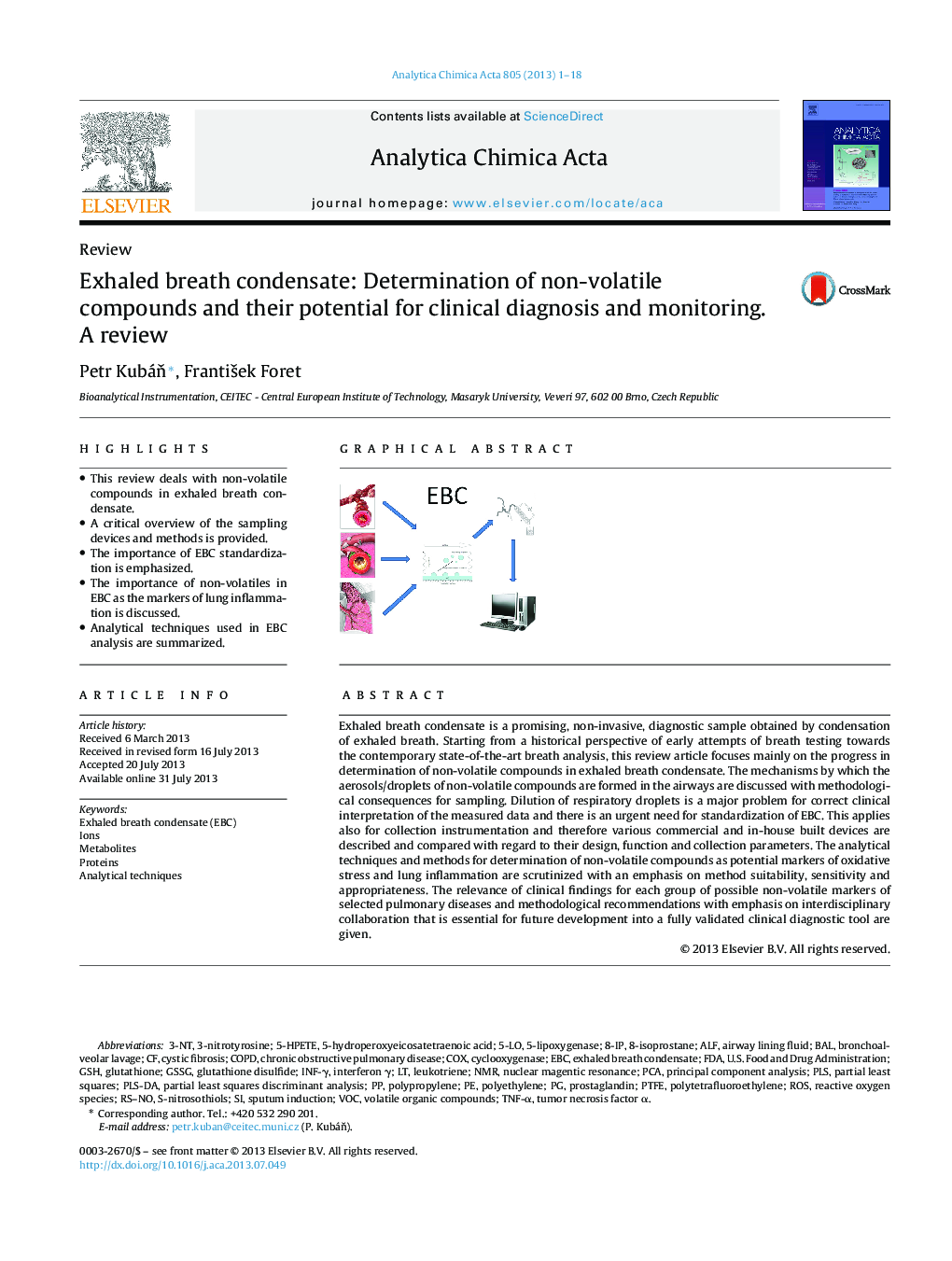| Article ID | Journal | Published Year | Pages | File Type |
|---|---|---|---|---|
| 1165058 | Analytica Chimica Acta | 2013 | 18 Pages |
•This review deals with non-volatile compounds in exhaled breath condensate.•A critical overview of the sampling devices and methods is provided.•The importance of EBC standardization is emphasized.•The importance of non-volatiles in EBC as the markers of lung inflammation is discussed.•Analytical techniques used in EBC analysis are summarized.
Exhaled breath condensate is a promising, non-invasive, diagnostic sample obtained by condensation of exhaled breath. Starting from a historical perspective of early attempts of breath testing towards the contemporary state-of-the-art breath analysis, this review article focuses mainly on the progress in determination of non-volatile compounds in exhaled breath condensate. The mechanisms by which the aerosols/droplets of non-volatile compounds are formed in the airways are discussed with methodological consequences for sampling. Dilution of respiratory droplets is a major problem for correct clinical interpretation of the measured data and there is an urgent need for standardization of EBC. This applies also for collection instrumentation and therefore various commercial and in-house built devices are described and compared with regard to their design, function and collection parameters. The analytical techniques and methods for determination of non-volatile compounds as potential markers of oxidative stress and lung inflammation are scrutinized with an emphasis on method suitability, sensitivity and appropriateness. The relevance of clinical findings for each group of possible non-volatile markers of selected pulmonary diseases and methodological recommendations with emphasis on interdisciplinary collaboration that is essential for future development into a fully validated clinical diagnostic tool are given.
Graphical abstractFigure optionsDownload full-size imageDownload as PowerPoint slide
